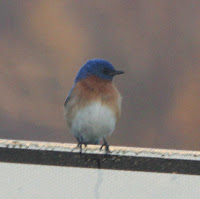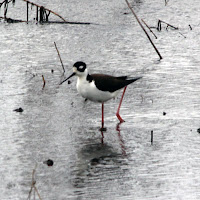 For the last month, as I've been birding in the South, day after day I've read posts of Common Redpoll sightings throughout the Northeast. It's a bird I'm missing from my life list (I just started two years ago and they weren't around last winter) and so I was hoping to see a few before they headed back north. Today I did.
For the last month, as I've been birding in the South, day after day I've read posts of Common Redpoll sightings throughout the Northeast. It's a bird I'm missing from my life list (I just started two years ago and they weren't around last winter) and so I was hoping to see a few before they headed back north. Today I did.I cranked up our feeding program upon our return to Vermont on Thursday although neighbors had kept the Chickadees and Nuthatches fed during our absence. Still, for three days no Redpolls and I thought perhaps I'd missed the window of their presence.
Today a couple showed up on the tray feeder and later were joined by a couple more. I wouldn't be surprised to see even more in the coming days now that they have found us. The Chickadees seem to be a little out of sorts at the arrival of these heavy feeders but their flashes of color against the snow are a delight to see. Soon they'll be heading back to Canada but it's nice to tank them up before their flight north.











